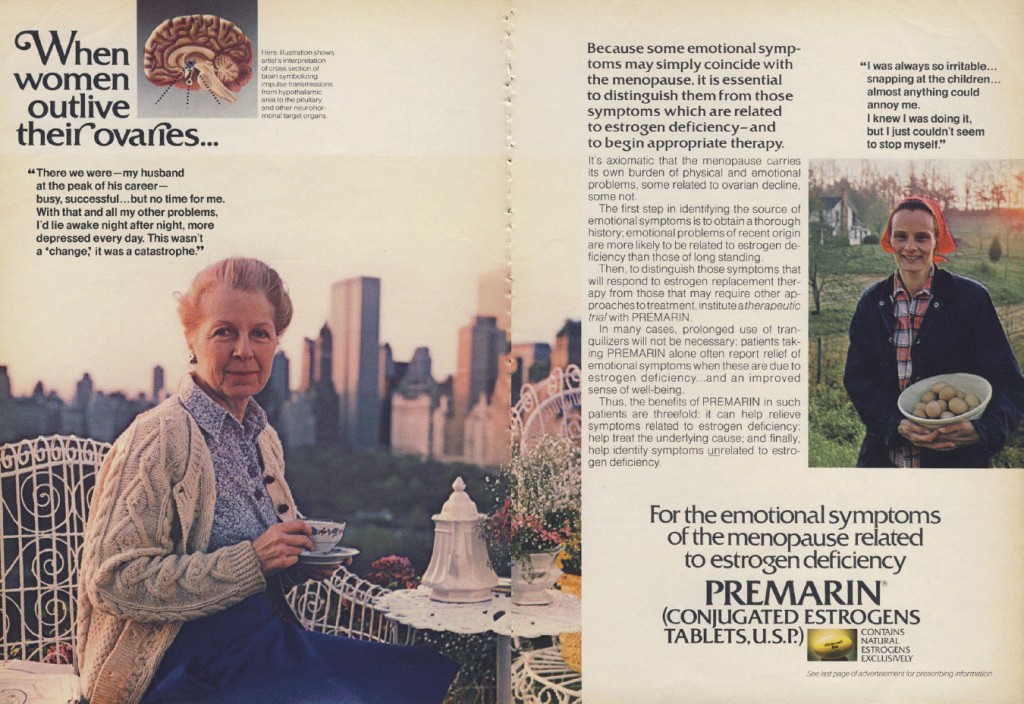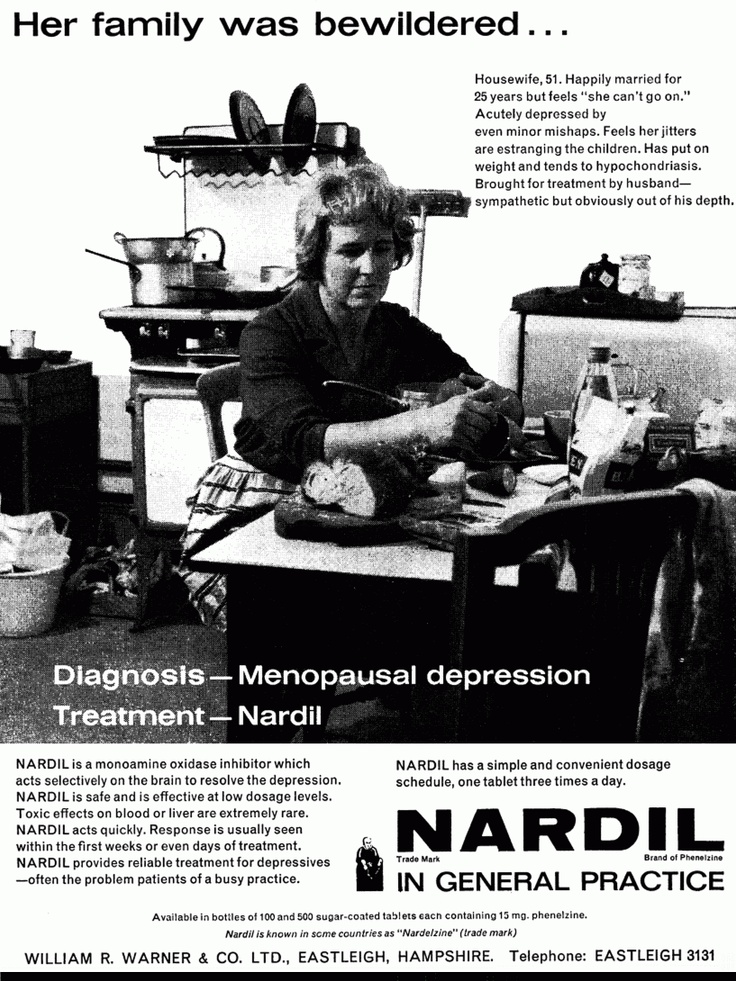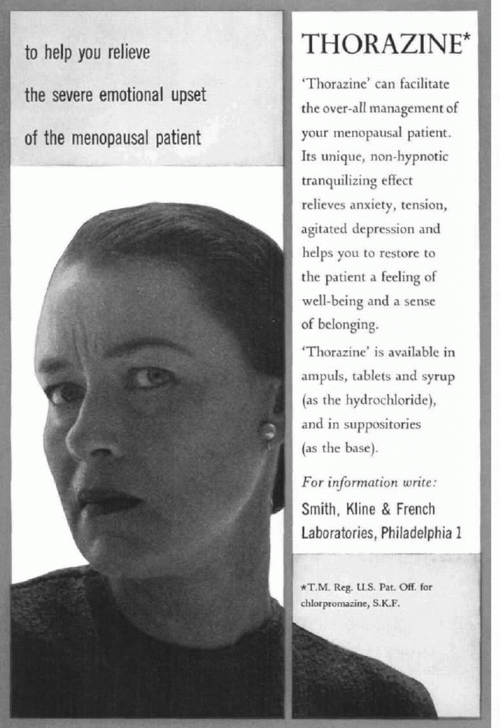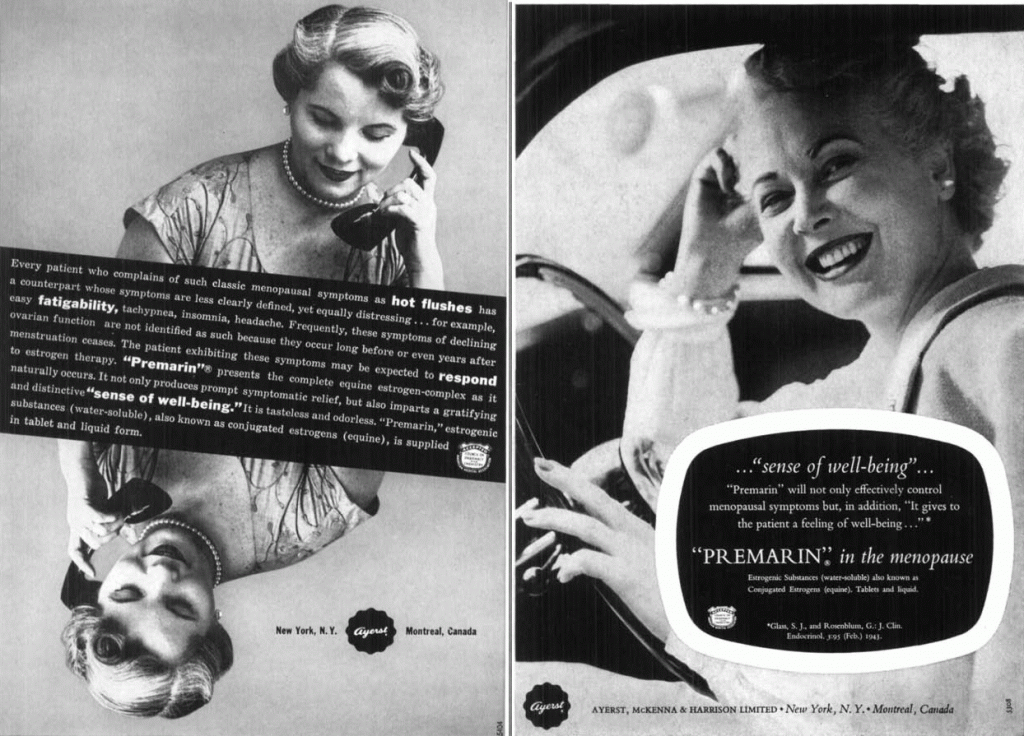Wacky menopausal function?
Try Ovazyl.
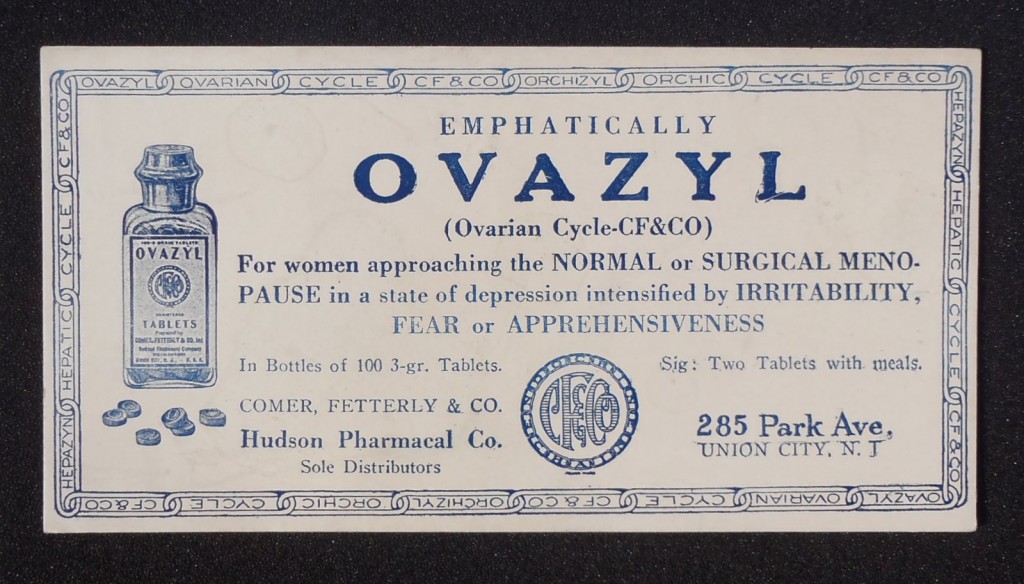
Described in the International Record of Medicine and General Practice Clinics (published 1922) as an endocrine functional tonic, Ovazyl was specifically (or “emphatically”) for women entering natural or surgical menopause in a “state of depression intensified by medical and physical irritability, fear or apprehensiveness.”
These nifty pills were developed from raw endocrine glands that were extracted and then dried up under laboratory conditions. Theoretically, two pills daily with meal would address ovarian or thyroid ‘weakness, menstrual disorders, neuroses and high blood pressure. The hormonal fountain of youth, if you will. Or something like that. The tricky part is replacing dwindling hormones with dried up glands rather than the hormones themselves.
Don’t know about you but raw endocrine glands are probably best with fava beans and a good chianti, if you get my drift.
Yikes! Another winning tonic from days of yore.
Read More
Have you outlived your ovaries?
“This wasn’t a change; it was a catastrophe.”
It is difficult to argue with a proper woman who claims that her symptoms are catastrophic, so much so that she needs to ‘relive’ and ‘re-prime’ her reproductive organs. When the message equals the madness, vintage advertising is at its finest. You can’t argue with science, right?! Ironically, this ad appeared in the Journal of the American Medical Association in 1975, the very same year designated by the United Nations as International Women’s Year. Clearly, Big Pharma didn’t get the memo!
Read More
Bewitched, bewildered, and bemused…Nardil and the ‘pause
Regular readers of Flashfree know how amused and astonished that I am when I run across vintage menopause ads. This one is for Nardil, an agent used primarily to treat social anxiety and certain types of depression that don’t respond to other drugs, meaning that it is rarely the first antidepressant used. Ironically, while first prescribed for menopause in the Sixties, it remains part of the depression armamentarium 50 years later! Nardil has some significant side effects, including a worsening of depression and suicidal thoughts.
The housewife in the ad was brought into the doctor by her husband, ‘sympathetic but obviously out of his depth!’
Read More
Menophrenia
Back in the Fifties, they used to treat menopause the way that they treated schizophrenia — with Thorazine. Evidently, the medical community also used Thorazine to treat nausea and vomiting, ‘senile agitation,’ and acute alcoholism. In other words, it was a psychiatric wonderdrug, creating zombie-like hormonal women, senile men and nauseated children across the U.S.
But back to women….I can only wonder why, at the time, no one thought to coin the term ‘menophrenia,’ i.e. emotional upset of the menopausal patient?
Welcome to the dark side of menopause and vintage advertising. Creating zombiepausal women everywhere!
Read More
Hormone Replacement…for that sense of wellbeing
I ran across a piece in yesterday’s New York Times highlighting that Roche Pharmaceuticals was closing its Nutley, NJ plant where it first developed Valium and its predecessor, Librium. In it, writer Robin Marantz Henig notes that these two agents were actually marketed to physicians as medications that could help individuals feel ‘normal,’ (that is, if normal means walking around in a pleasant fog that masks reality). Henig writes “As Roche closes its New Jersey headquarters, it plans to open a smaller research facility in Manhattan in late 2013, part of a wave that city officials hope will turn New York into a biotech mecca. The company’s transition reminds us of a phenomenon that’s become so common we no longer even think of it as weird: the oxymoronic attainment, through using drugs to make you feel more like yourself, of an artificially induced normal.”
This thought got me wondering if we had actually gone full circle, where the ultimate goal of treatments for menopausal symptoms are to help a woman feel normal again without addressing underlying issues that may be exacerbating how she feels or how her symptoms manifest, things like life stressors, obesity, thyroid imbalances and intimacy problems.
Is HRT (or low dose HRT, which industry has quickly created to replace controversial products like Premarin) soon to be the ‘new normal?’ Granted, the only fog it creates may be the one that removes common sense from the equation in a woman’s quest to replace that which is missing. Ironically, agents like valium and librium similarly took the edge off the very factors likely causing anxiety in the first place.
And so, on a Monday, I pose this question:
What does your new normal look like?
It seems that everything that’s old may very well be new again.
Read More






